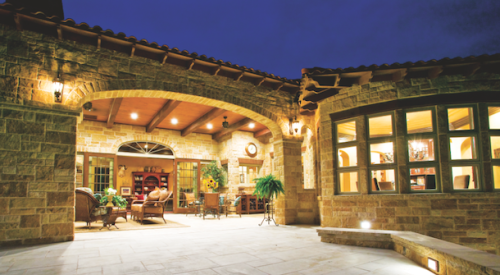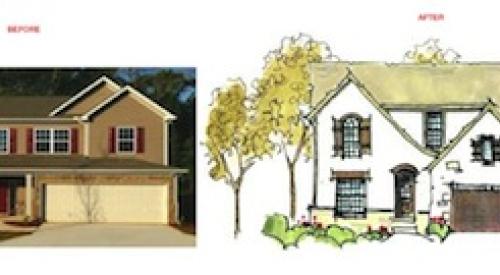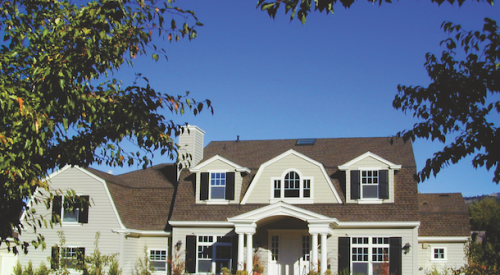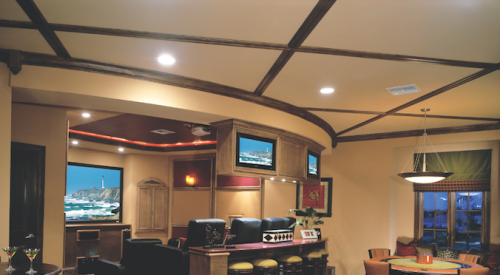|
Placing the secondary bedrooms in a detached area or guest quarters, as in plan LWG-2000, appeals to some baby boomer clients. Designed for a future retirement home, this plan features a functional study that easily converts into a second bedroom. Guests, older children or grandchildren enjoy the privacy of two bedrooms and a loft above the detached garage.
|
|
This 2,250-square-foot plan, plan LWG-2250, offers an optional home theater, complete with a half bath and refreshment alcove. Located above the garage, the surround sound and booming bass are unlikely to disturb the rest of the family.
|
|
Locating the master bedroom away from secondary bedrooms, as in plan LWG-3020, creates a sense of seclusion for the homeowner. The short hall leading to the master area features a recessed photo gallery. Likewise, the hall connecting the secondary bedrooms has a window seat with flanking bookcases. A game room located above the garage offers a place for the children to play without disturbing the rest of the family.
|
Homeowners embrace open floor plans, yet desire privacy. Delivering the former often means overlooking the latter. Since many design professionals consider hallways wasted space, floor plans often lack the elements of basic privacy. Recently, when judging a Parade of Homes in a major Southern city, I was amazed to find several homes featuring magnificent foyers with views directly into the master bedrooms. So much for even basic privacy!
I frequently ask clients about the homes that appealed to them over the years. Invariably, they recall an older home where they lived as a child or a cottage or bungalow that belonged to a grandparent. Beyond the obvious sentimentality of these recollections, there exist some basic design features that contribute to the "livability" of these older homes. Their perceived coziness stems from the fact that these houses always had an area - such as a bedroom - that could serve as a secluded retreat.
Unfortunately, as we open up floor plans, these secluded areas are more and more difficult to find. The solution does not involve building more walls and returning to long hallways. The idea of a kitchen merging with the dining room and family space appeals to most homeowners. However, a short hallway or buffer zone leading to the master sleeping area certainly functions better than opening directly into the family room or foyer.
Secondary bedrooms also require a certain amount of seclusion, well-removed from the master suite. In addition, eliminating common walls offers more privacy. While perhaps not so critical for children, secluded and quiet bedrooms are very important for homeowners anticipating their use by guests. A short hallway allows doors entering each room to be located far enough apart to create a sense of privacy. Adding a few square feet to the hallway transforms that space into a photo gallery or a library with built-in bookcases.
Baby boomers express concern not only for the privacy of their guests but also for the costs involved in building seldom-used bedrooms. As a result, some clients prefer two-bedroom homes with separate guest quarters. Not only are these detached areas more efficient to heat and cool, the privacy becomes quite appealing. Both guests and homeowners enjoy the comfort and seclusion of this arrangement.
While game rooms have been popular for years, their location really depends on their anticipated use. For younger children, an area close to the family room or kitchen allows parents to monitor the activities. Older children usually require more privacy. Perhaps teenagers require even more monitoring, but the fact is, if they think adults are near, the room simply won't be used. You know the theory - better to have them in your home, even if it's in a game room on the second floor away from the family.
Home theaters also require serious consideration. With surround sound and sub-woofer speakers that shake walls, this room can compromise the privacy of the entire house. One of the best locations is a bonus room above the garage. The walls still need plenty of insulation and soundproofing, but this location is the least likely to disturb those not interested in hearing the all-too-real sounds of jets landing and battles being fought.
Designing homes with privacy in mind requires a logical, yet critical plan analysis. Sound usually can be controlled with insulation, but visual privacy becomes a much more challenging detail. Remember, hallways are not always a bad design element. Often, a short hall that requires turning a corner before the bedroom entrance can create the perception of seclusion.
Since the lifestyle of each client varies, provide variety in floor-plan designs and options. Listen carefully to what your clients say, and don't hesitate to challenge them with new ideas.
To view these plans, visit www.conceptualhouseplans.com/HousingZone. For questions or comments, email lwgquestions@conceptualhouseplans.com












